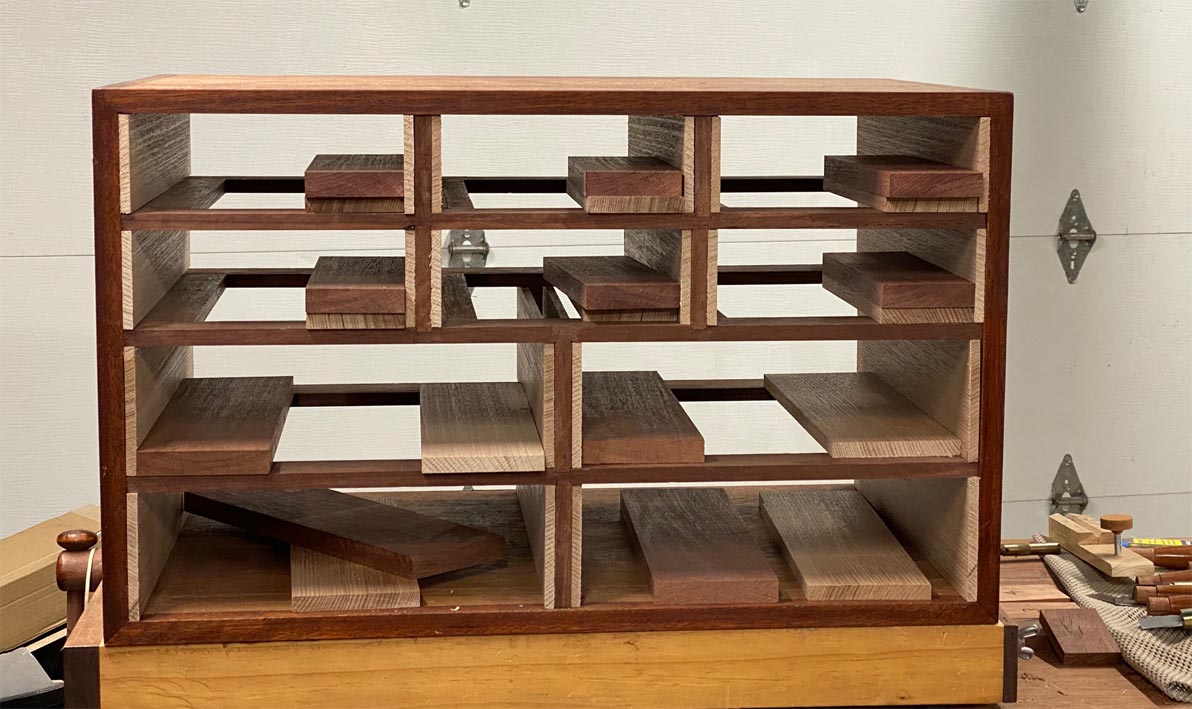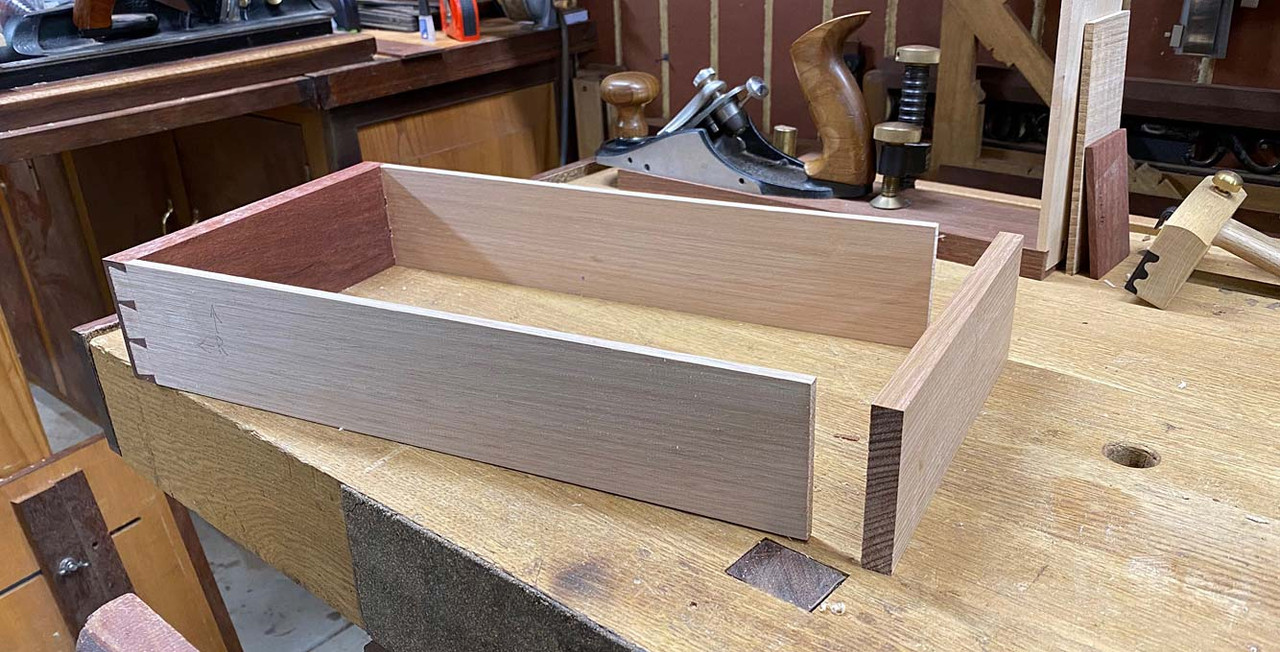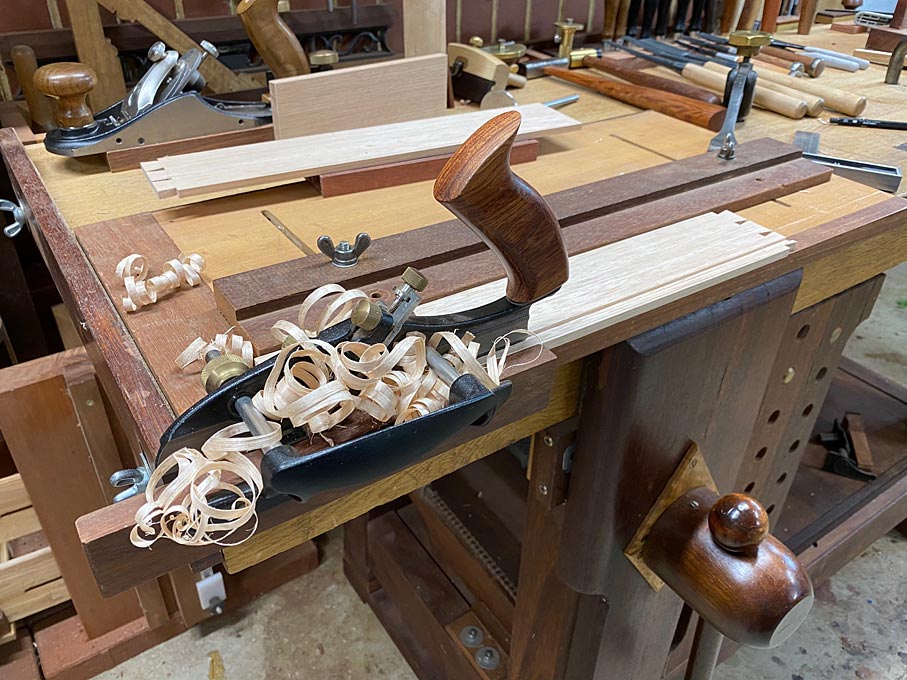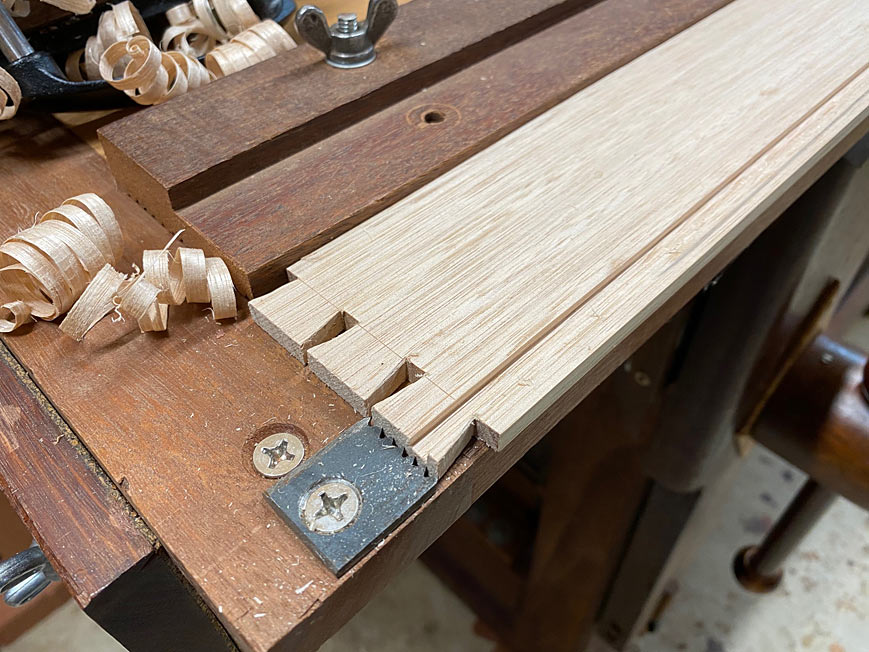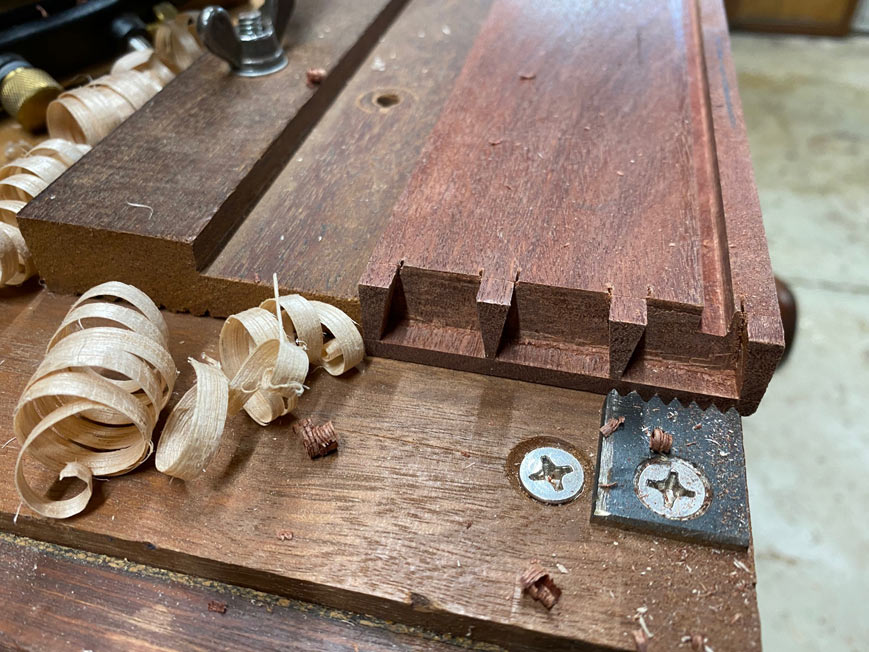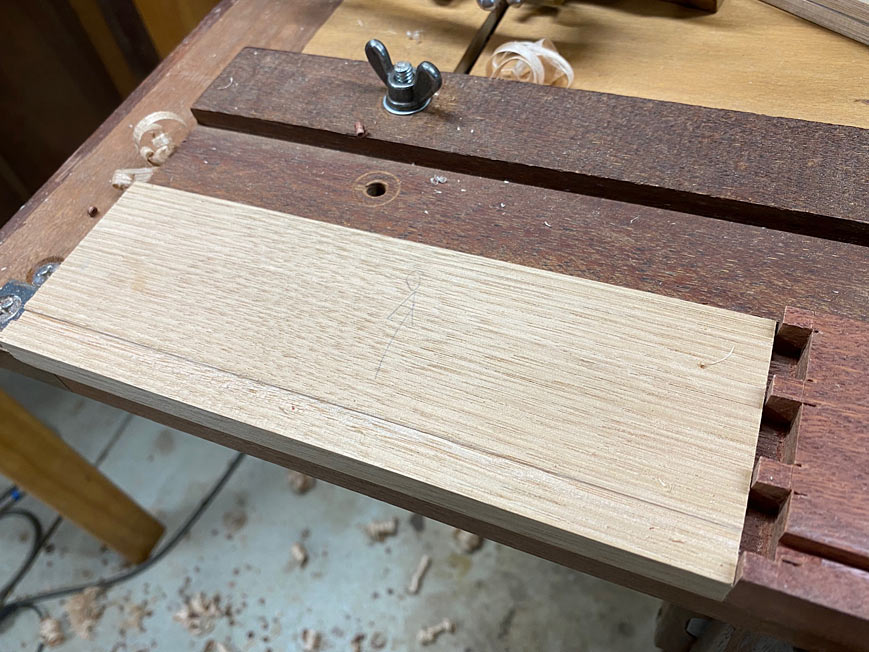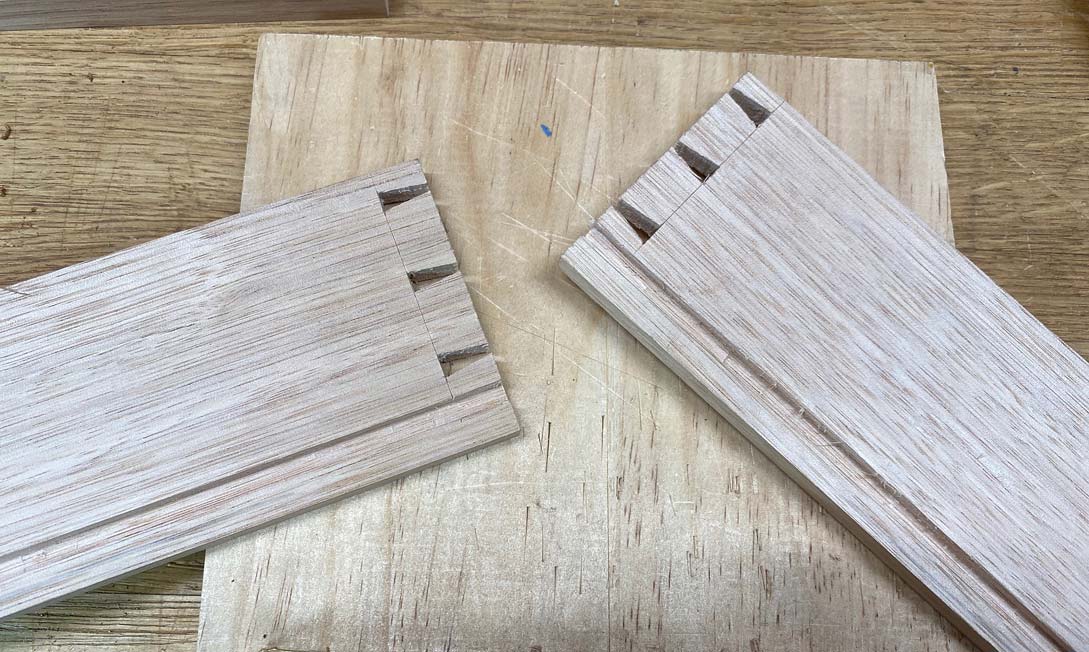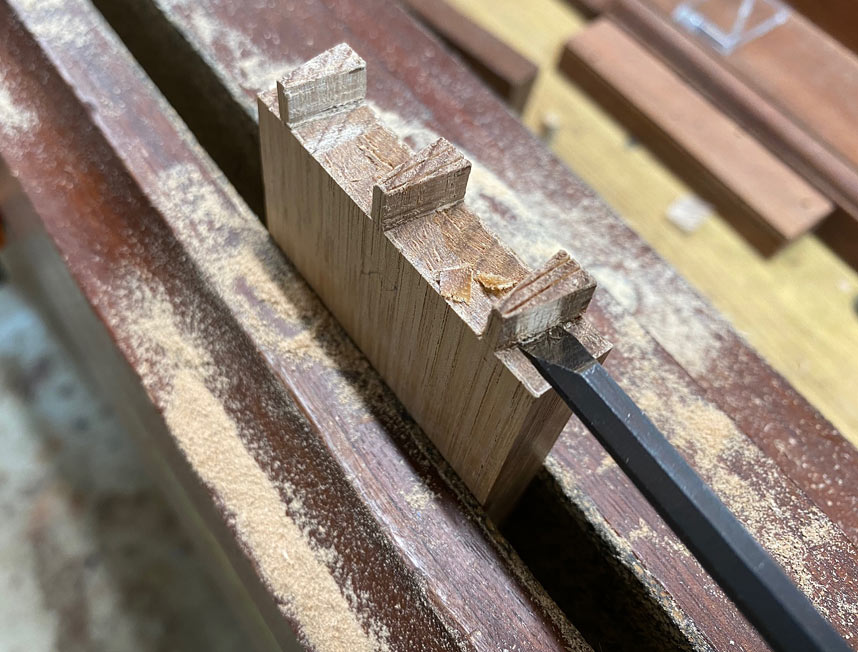I have a project I would like to do but I am contemplating how to build the drawer.
I would like to use a groove with a panel for the bottom, and I am trying to wrap my head around how to do it.
I watched a video of Paul Sellers method and he plows (ploughs?) Through gooves on all the pieces and the groove that is shown is covered by a drawer front and obviously the back isn't seen.
I would like to avoid using a two piece drawer front and just use the 4 sides and the bottom panel.
I want to avoid using stopped grooves but also don't want the grooves visible from the front.
I am thinking that using a half blind dovetail for the front would avoid that? Is there another method that doesn't involve stopped grooves or half blind dovetails?
For reference most drawers I have built in the past have either been mitered corners with power tools or I have cut rabbets on all the sides of the bottoms with hand tools and used nails to hold them in. While that works, it's more "rustic" than I am looking for with this project





 Reply With Quote
Reply With Quote





